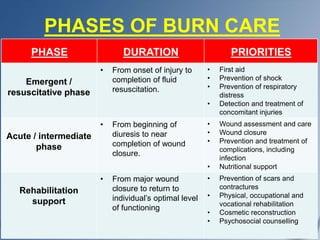A nurse assesses a patient’s peripheral IV site and notices edema and tenderness above the site. What action will the nurse take next?
Stop the infusion of IV fluids
Apply cold compresses to the IV site
Elevate the extremity on a pillow
Flush the catheter with normal saline
The Correct Answer is A
A. Stop the infusion of IV fluids:
This action may be appropriate if there are signs of infiltration or extravasation, where the IV fluid leaks into the surrounding tissue instead of entering the vein. Stopping the infusion can help prevent further tissue damage and assess the extent of the infiltration.
B. Apply cold compresses to the IV site:
Cold compresses can help reduce swelling and discomfort at the IV site. This action may be appropriate if there are signs of local inflammation or mild irritation at the insertion site.
C. Elevate the extremity on a pillow:
Elevating the extremity can help reduce swelling and promote venous return. This action is beneficial if there is edema or localized swelling above the IV site.
D. Flush the catheter with normal saline:
Flushing the catheter with normal saline is not typically the initial action in response to edema and tenderness above the IV site. Flushing is more commonly performed to ensure patency and proper functioning of the IV catheter.
Nursing Test Bank
Naxlex Comprehensive Predictor Exams
Related Questions
Correct Answer is D
Explanation
A. Cardiac arrest related to septic shock:
Septic shock can occur in burn patients due to the breakdown of the skin barrier, which allows pathogens to enter the bloodstream and cause systemic infection. However, while septic shock is a serious complication of burn injuries, it is not the primary cause of death in the emergent phase. Septic shock can lead to multiple organ failure and contribute to mortality, but it is often a later complication rather than an immediate cause in the emergent phase.
B. Infection:
Infections are a significant concern in burn patients, especially as the burn wound provides an ideal environment for bacterial growth. However, infections typically contribute more significantly to mortality in the later phases of burn care rather than in the emergent phase. In the emergent phase, hypovolemic shock and other immediate complications have a greater impact on mortality.
C. Adrenal failure:
Adrenal failure, specifically acute adrenal insufficiency or Addisonian crisis, can occur in burn patients due to the stress response and corticosteroid depletion. While adrenal insufficiency is a concern in severe burn cases, it is not the primary cause of death in the emergent phase requiring referral to a burn center.
D. Hypovolemic shock and renal failure:
Hypovolemic shock is a critical concern in the emergent phase of burn trauma because burns can lead to significant fluid loss and electrolyte imbalances. Hypovolemic shock results from insufficient circulating blood volume, leading to inadequate perfusion of organs and tissues, which can be life-threatening. Additionally, renal failure can develop due to hypovolemia, decreased cardiac output, and the release of inflammatory mediators, leading to acute kidney injury (AKI). Hypovolemic shock and subsequent renal failure are major contributors to mortality in the emergent phase of burn trauma, necessitating prompt referral to a burn center for specialized care.

Correct Answer is D
Explanation
A. Evidence-based practice:
Evidence-based practice (EBP) involves integrating the best available evidence from research, clinical expertise, and patient preferences and values to inform nursing practice. In perioperative nursing, EBP is important for making informed decisions about preoperative, intraoperative, and postoperative care protocols. For example, using evidence-based guidelines for surgical site infection prevention, pain management strategies, and postoperative care protocols can improve patient outcomes and safety.
B. Informatics:
Informatics refers to the use of information technology and data management systems to support nursing practice, education, research, and patient care. In perioperative nursing, informatics plays a crucial role in managing electronic health records (EHRs), accessing patient data, documenting care, and communicating with interdisciplinary team members. It also includes utilizing perioperative information systems for surgical scheduling, anesthesia records, and tracking patient progress during surgery.
C. Quality improvement:
Quality improvement (QI) involves systematic processes to monitor, assess, and improve the quality of healthcare services. In perioperative nursing, QI initiatives focus on enhancing patient safety, optimizing surgical outcomes, reducing complications, and improving efficiency in perioperative processes. Nurses participate in QI projects by analyzing data, identifying areas for improvement, implementing evidence-based practices, and evaluating the impact of interventions on patient care and outcomes.
D. Safety:
Safety is a fundamental QSEN competency, particularly critical in perioperative nursing care. Perioperative nurses are responsible for ensuring the safety of patients during all phases of surgery, including preoperative assessment, intraoperative care, and postoperative recovery. This includes measures such as verifying patient identity and surgical site, preventing surgical errors (e.g., wrong-site surgery), maintaining aseptic techniques to prevent infections, preventing falls and injuries, managing anesthesia safely, and adhering to protocols for safe medication administration and equipment use.
Whether you are a student looking to ace your exams or a practicing nurse seeking to enhance your expertise , our nursing education contents will empower you with the confidence and competence to make a difference in the lives of patients and become a respected leader in the healthcare field.
Visit Naxlex, invest in your future and unlock endless possibilities with our unparalleled nursing education contents today
Report Wrong Answer on the Current Question
Do you disagree with the answer? If yes, what is your expected answer? Explain.
Kindly be descriptive with the issue you are facing.
